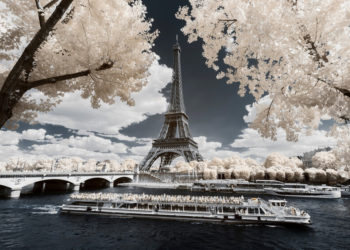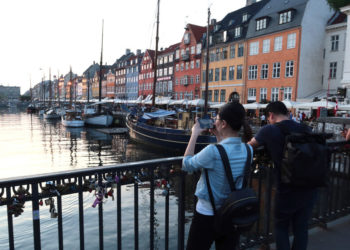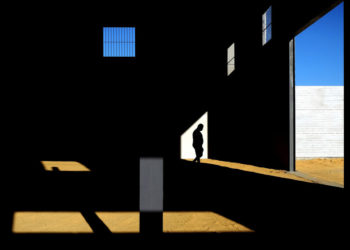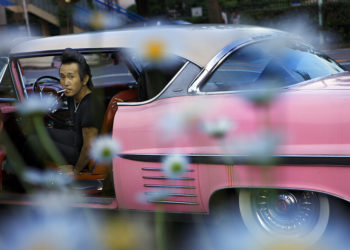home
>
Blog
>
Photography
>
Know the differences between an overexposed photo and an underexposed one
Know the differences …
Good! Has it happened to you that you have taken an incredible photo but when you review it on your computer you see that it is very bright? Or very dark? This has to do with overexposure and underexposure in photography.
But these two terms cover a concept that goes far beyond a configuration in your camera. Therefore, in this article we will teach you the importance of photographic exposure and how an overexposure or underexposure can completely change the end result. Before you read on, learn the best tips for taking photos like a pro. Now yes, bring your camera!
Index:
- What is the photographic exhibition?
- What is overexposure in a photograph?
- What is an underexposed photo?
- The triangle of the photographic exhibition
- How is photographic exposure measured?
- Overexposure and underexposure in retouching
Before knowing more about overexposure and underexposure, we have to know the concept of one of the fundamental pillars of photography: exposure.

Image: Unsplash
The photographic exhibition is the amount of light the camera receives through the lens towards the camera sensor for a specified time. It sounds simple but it is not so simple. As we all know, light in photography is essential to get good images and a correct exposure will allow us to achieve great results.
Having a clearer idea about this universal concept, we can already know what is overexposure in photography and how it differs from underexposure.
Photographic overexposure occurs when the camera sensor receives too much light. Colloquially, this effect is often referred to as “burnt image”.

Image: Unsplash
What happens when an image is overexposed is that there will be no information in the brightest pixels in the image. In simple terms, the photo will be too light or too bright.

We assume that you already imagine what an underexposed photo is. Yes, the opposite of overexposure.
If an overexposed photo is the result of excess light, an underexposed photo loses information in the darkest pixels of the photo, which results in a lack of light. Notice the difference with the overexposed image.

While some photographers may use overexposure or underexposure as a resource, the ideal is to achieve the correct exposure. A kind of middle ground. But how to achieve it?
To achieve a correct photographic exposure there is no default manual, although the means do exist to achieve it.
If you want there to be no overexposure or underexposure in your photographs, we must refer to the triangle of photographic exposure, made up of three basic parameters: aperture, shutter speed and ISO.

Image: Capture The Atlas
By joining these three concepts we will be able to determine the exposure value (EV). We invite you to know this guide on the triangle of the photographic exhibition.
Ready to sell your photos online? Learn how to do it with this free guide

Diaphragm aperture
The diaphragm aperture will determine the amount of light that will pass through the lens towards the camera sensor, so this variable is essential to achieve a correct exposure.
When using a wider aperture will bring more light into the camera, so that your image will be more exposed. On the contrary, closing the aperture will decrease the amount of light and the result will be a darker image, ergo less exposed.
Shutter speed
It is also known as exposure time and is, worth the redundancy, how long the camera shutter will be open capturing light.
While the longer the shutter is receiving light, the image will be brighter; the opposite happens when the shutter opens and closes quickly, resulting in a darker photo.
Mastering the shutter speed is also critical to achieving the ideal photographic exposure.
ISO sensitivity
ISO is not a natural variable related to photographic exposure. It happens that this parameter is able to increase the exposure of the image but artificially.

Image: Unsplash
This, however, does not mean that it is not a fundamental element in the triangle of photographic exposure. The higher the ISO you will have more light in your image; if it is lower, your photo will be darker. This guide to ISO in photography will help you better understand this concept.
It is appropriate to point out that to achieve a correct photographic exposure the ideal is to set one of these parameters and, based on it, alter the remaining two.
To measure photographic exposure you have to rely on three modes. Fernando O’Farrill, professor of our online course on Fundamentals of Digital Photography, gives us more details about it.
“The light metering is not very accurate, but we can approximate as the case may be. While the exposure of an image is subjective, objectivity can be achieved through spot, partial evaluative, and evaluative metering.”
What Professor Fernando refers to is a measurement system that equip the current cameras called “Through the lens” (TTL, for its acronym in English), which consists of a sensor that is capable of measuring light in the different parts of the frame. We explain the details of each light measurement method:
- Spot metering: The center of the frame has the largest percentage of the total exposure calculation.
- Partial evaluative metering: The areas closest to the center have the highest percentage of the total exposure estimate.
- Evaluative metering: This method measures all the light in the frame.
Did you know that you can build a home photo studio? Make it easy for you with this free guide!

To analyze these methods, cameras have some useful tools that will allow us to reach a correct exposure:
📌 Exposure meter: This tool will help us measure the exposure value (EV) of the photograph. If the EV shows 0, the correct exposure; if it is greater than 0, there will be overexposure; whereas, if it is less than 0 the image will be underexposed.
📌 Histogram: You should go to this tool to check if the photo you took has a correct exposure. This tool will show you the distribution of tones in a photograph. A correctly exposed histogram will show you some graphs in the middle; that is, neither exposed to the right nor to the left.

Image: Crehana / Course: Fundamentals of digital photography
The best way to achieve a correct photographic exposure is to practice and toggle the values as many times as you can to achieve the long-awaited balance. However, if this is not successful, can you correct the overexposure or underexposure in editing?

In case you find an underexposed or overexposed photo, it is likely to correct these errors in Adobe Photoshop with the “Dodge” and “Burn” tools.
However, it is important that you keep in mind that this method of retouching in photographic exposure is destructive; that is, once you apply it, the image information is permanently altered.
So that you do not have problems in the process of retouching the photographic exhibition, it is advisable to duplicate the layer, so that if you make a mistake you can return to the original image.

Image: Crehana / Course: Color Management and Retouching in Photoshop
Once this point has been clarified, in the overexposure or underexposure setting, a histogram will appear, as in the photographic camera, that will allow you to calculate the values to achieve a correct exposure. To do so, you must follow the following steps:
✅ In the toolbar select Dodge or Burn depending on what you want to achieve.
✅ Select a brush tip and define options.
✅ In the options bar, in the Range menu, select one of the alternatives (midtones, shadows, highlights).

✅ Specifies the exposure for tools.
✅ Select the Airbrush button.
✅ Select the Protect Tones option to minimize clipping of highlights and shadows.
✅ Drag the pointer over the area of the image that you want to darken or lighten.
eye! If in the Range menu you select the “Shadows” alternative, be very careful because you could darken the image a lot. If you want to become an expert in photo retouching, we have the solution for you.
Although it is true that with the experience you gain, you will be able to use overexposure and underexposure as a resource, the ideal is that, first, know how to master the basic parameters of photography to take pictures with a balanced exposure. By following these tips, we are sure, you will achieve it. Practice makes perfect 📸. Good luck!

![📷 What is photographic overexposure and underexposure? [2021]](https://big-photography.com/wp-content/uploads/2021/02/sobreexposicion-fotografia-1140x570.jpg)




![📸Photo exposure triangle: handle light like EXPERT [2021]](https://big-photography.com/wp-content/uploads/2021/02/triangulo-exposicion-fotografia-75x75.png)
![🥇 The BEST photography courses in DF [2021]](https://big-photography.com/wp-content/uploads/2021/02/cursos-fotografia-en-df-75x75.png)
Discussion about this post